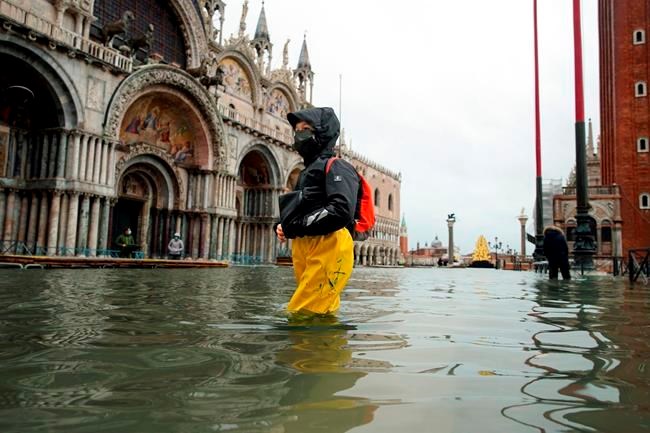High tides flooded St. Mark’s Square in Venice on Tuesday, propelled by winds that were stronger than predicted, and an experimental system of inflatable barriers wasn’t activated to prevent water from invading the lagoon city.
The system, while still in an experimental phase, gets activated when high tides are predicted to reach at least 1.3
Some shops were flooded, and Venetians waded in water as they scrambled to set out raised walkways. Damage to shops and other business was destined to compound the suffering already sharply felt in Venice’s economy by tourism largely washed away by the pandemic.
“Unfortunately, the weather is freer than us. It does what it wants,” Venice Mayor Luigi Brugnaro said ruefully, referring to the stronger-than-expected winds that whipped across the Adriatic from Croatia’s coastline.
In July, Venice successfully carried out a trial run of the ambitious anti-flood system, which consists of 78 barriers that can be inflated when needed to rise from the sea like a kind of dike-on-demand. The system is dubbed Moses after the Biblical figure, who, in the Old Testament account, parted the waters of the Red Sea.
Just over a year ago, Venice experienced its worst flooding in more than 50 years when the water reached 1.87
The new
A tide of 1.20
“We’re working to activate Moses tonight in view of the peak prediction for tomorrow (Wednesday),” Brugnaro said. The barriers would likely be activated shortly after midnight, he said.
Noting that the system was still in the experimental stage, the mayor said “more rapid protocols” to activate it were needed, in view of Tuesday's flooding.
The Associated Press



